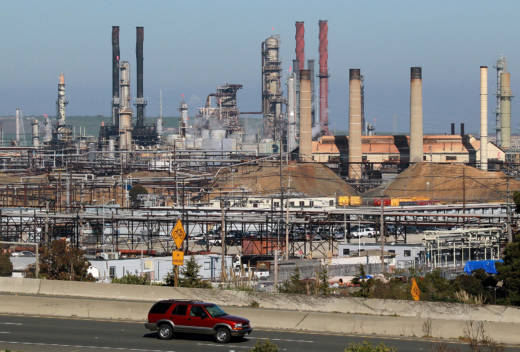A loss of steam production at Chevron’s Richmond refinery during a major rainstorm on Sunday morning triggered the shutdown of several processing units, leading to a fire at the facility and several days of flaring, the oil giant told regulators this week.
Refinery officials say close to 17 tons of sulfur dioxide were released over two days as the facility sent gases to its flares, a safety technique often used by refineries to ease pressure and stabilize operations.
The accident prompted dozens of complaints from nearby residents, and is now being investigated by the regional air district and county public health officials to determine whether the odor led to the closure of several local schools. The incident, along with another malfunction at the PBF Refinery in nearby Martinez, may also temporarily increase the average cost of gasoline in California, according to Patrick De Haan, the head of petroleum analysis at GasBuddy.

